As the processing of honey has become more complex, so has its labeling. The labels “raw,” “pure,” and “unfiltered” tell consumers how the honey was handled after harvest. This is important because chemical components (enzymes, vitamins, and antioxidants) are destroyed or removed during certain processing methods1,2,3.
Unfiltered vs. Micro-filtered
There are several different sizes of filters that beekeepers can use to produce honey. When beekeepers use finer micro- or ultra-filters, pollen granules and other solids are completely blocked from entering the final product.
According to the FDA, any product that’s been ultra-filtered and no longer contains pollen is not honey. Labeling products that contain no pollen as “Honey” may be illegal, but there is no enforcement. A 2011 study found that more than three-fourths of the honey found in grocery stores has no detectable pollen4,5.
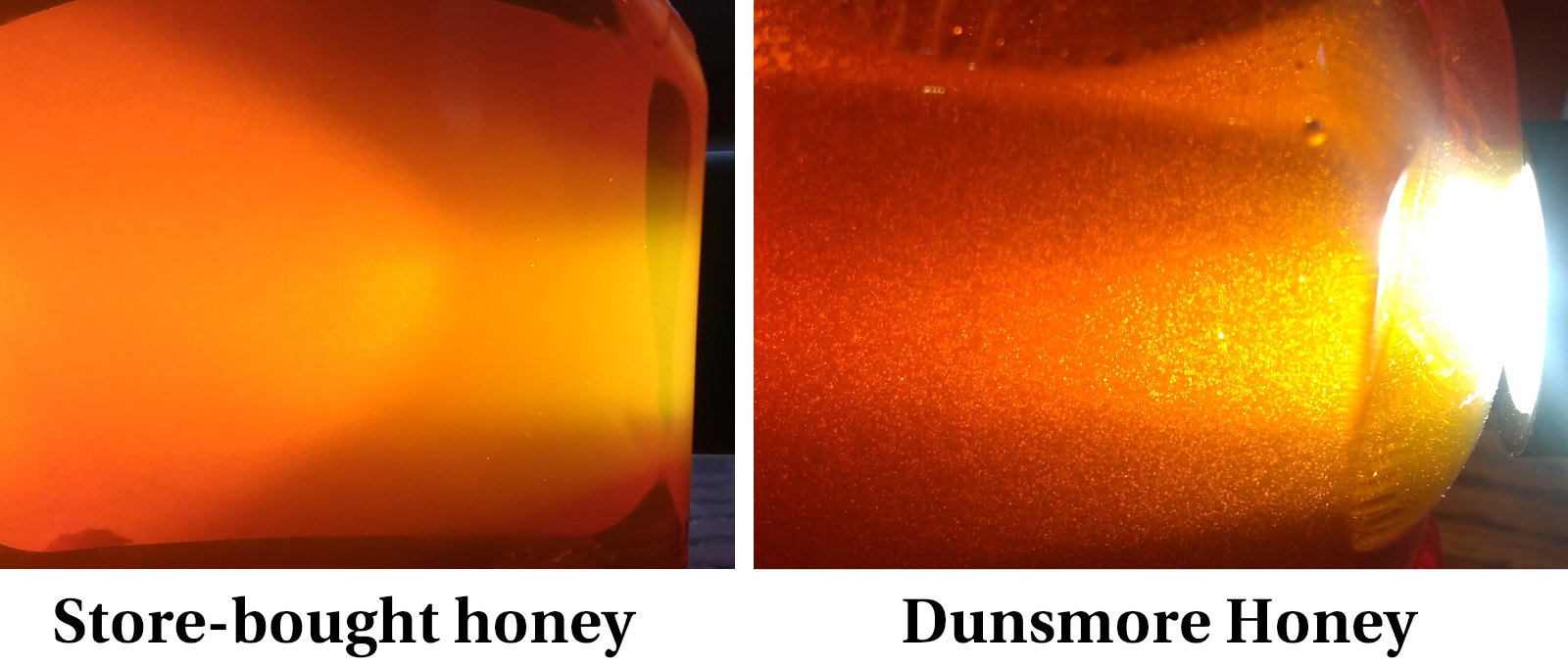
Dunsmore Honey passes unheated honey through a coarse strainer, allowing bits of pollen and comb through. Our honey is considered to be unfiltered because it still contains pollen and wax6.
Raw vs. Heated
Many honey companies heat honey. They use machinery such as immersion heaters, storage tank heaters, or extractor heaters to process the honey. Heating honey delays crystallization, allows easier filtration and flow through machines, makes it last longer on shelves, and gives it a clearer product that is often more desirable.
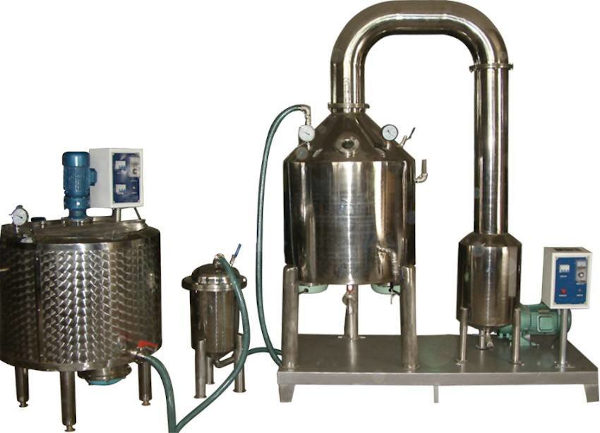
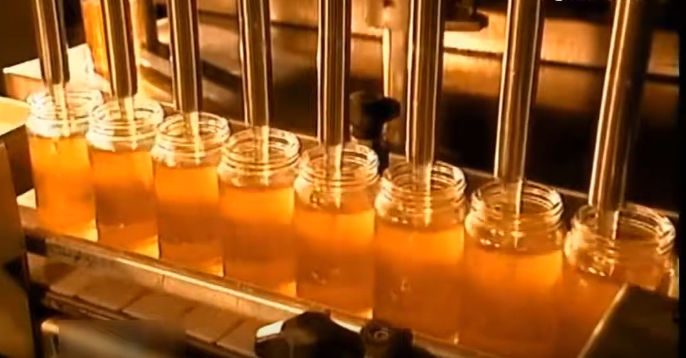
The National Honey Board defines raw honey as “honey as it exists in the beehive or as obtained by extraction, settling or straining without adding heat.”7 The Texas non-profit organization Real Texas Honey defines raw honey as honey that has not been heated to temperatures above 120℉.
There is much debate about the temperature at which honey loses its beneficial properties and is no longer considered raw. Honey has digestive enzymes that help break down food in the digestive tract8. Higher temperatures destroy these enzymes, but the exact temperature at which an enzyme is destroyed can vary with each enzyme and other factors9,10,11. Some believe that cooking food at temperatures above 104℉ or 110℉ destroys digestive enzymes12,13. Raw food diet advocates believe 118℉ is the maximum temperature that (wet) food can be heated to be considered raw14. Ultimately, honey is more than just digestive enzymes and contains several other chemical components that can change when heated15. There is no U.S. federal definition of raw honey16.
At Dunsmore Honey, we consider our honey raw because we never heat it.
Pure vs. Adulterated
Honey producers can add inexpensive sweeteners, like corn syrup, rice syrup, and sugar syrup, to honey. The U.S. Food and Drug Administration issued a guidance document advising honey companies on “Proper Labeling of Honey and Honey Products,” and the State of Texas has regulations on the “Labeling and Sale of Honey”17,18. Unfortunately, honey producers continue to bottle adulterated honey19,20,21.
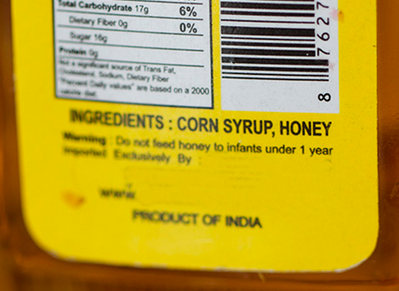
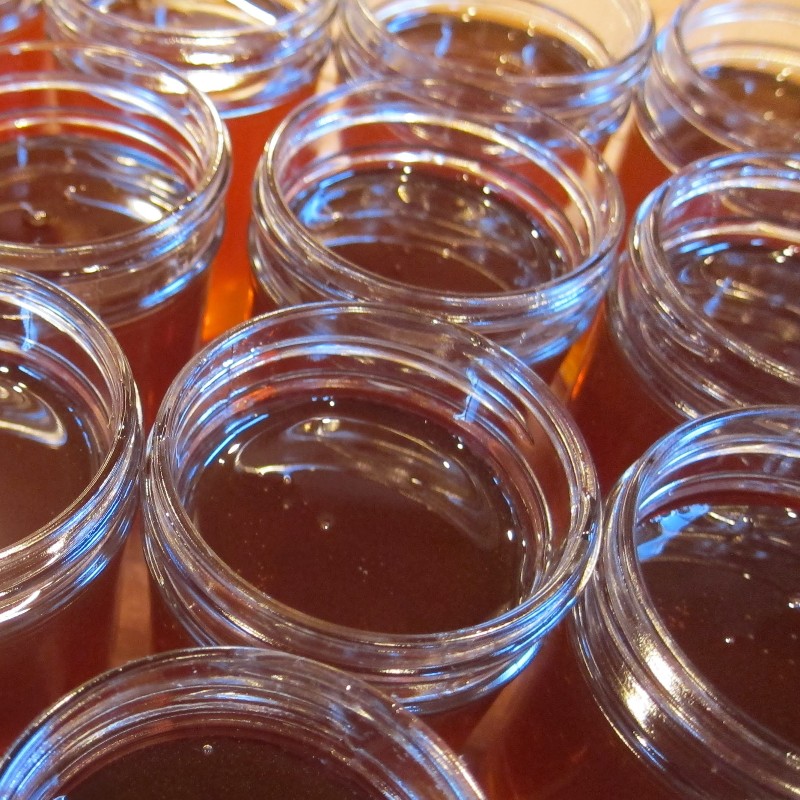
Conclusion
Choosing which honey to buy can be overwhelming—there are many different labels, many different companies, and many different kinds of honey. Dunsmore Honey produces pure Wild Flower and Forest honey from the Texas Hill Country, with pollen and all the other vitamins, minerals, amino acids, enzymes, etc. intact. We do not heat, micro-filter, or adulterate honey like large-scale honey producers do. Purchase our raw, pure, unfiltered honey at our online shop and enjoy what our customers like to call the “good stuff.”
References
- “Honey: A Reference Guide to Nature’s Sweetener” National Honey Board
- “The Chemistry of Honey” Bee Culture Magazine (July 25, 2016)
- “Honey: Chemical composition, stability, and authenticity” Food Chemistry Volume 196, 1 April 2016, Pages 309-323
- “Tests Show Most Store Honey Is Not Honey” Food Safety News (November 7, 2011)
- “Top Pollen Detective Finds Honey a Sticky Business” Food Safety New (November 7, 2011)
- Real Texas Honey
- Frequently Asked Questions abou the Naitonal Honey Board
- “12 Foods That Contain Natural Digestive Enzymes” Healthline
- Enzyme Nutrition Dr. Edward Howell (1985)
- “The Denaturation and Degradation of stable enzymes at high temperatures” Biochem. J. (1996) 317, 1–11
- Enzyme kinetics Segel, I,H. (1975)
- The Body Systems Approach to Natural Healing Tree of Light Institute
- “At what temperature does honey have to be heated too, too destroy the health benefits for humans?” Bee Health
- “Raw food diet” ScienceDaily
- “What is the difference between pure honey and raw honey?” Healthy with Honey
- “Frequently Asked Questions” National Honey Board
- Texas Statutes, Agriculture Code, Title 6, Subtitle A, Chapter 131, Subchapter E
- Guidance for Industry: Proper Labeling of Honey and Honey Products US Food and Drug Administration
- “Rotten” (2018) Season 1 Episode 1 – “Lawyers, Guns, and Honey”
- “Tests Show Most Store Honey Is Not Honey” Food Safety News (November 7, 2011)
- “Detecting Honey Adulteration” Bee Culture Magazine (April 20, 2017)
